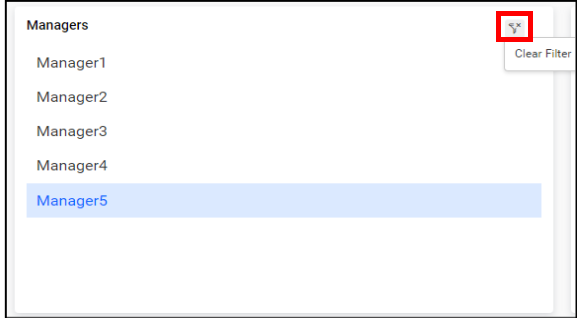Configuring Cross Filters for Dashboards
Cross filters allow you to control the interdependency of widgets in a dashboard concerning dynamic user interactions.
You can configure the dashboard filters through the Cross Filter Configuration window, which is accessed by selecting the Filter menu in the toolbar.

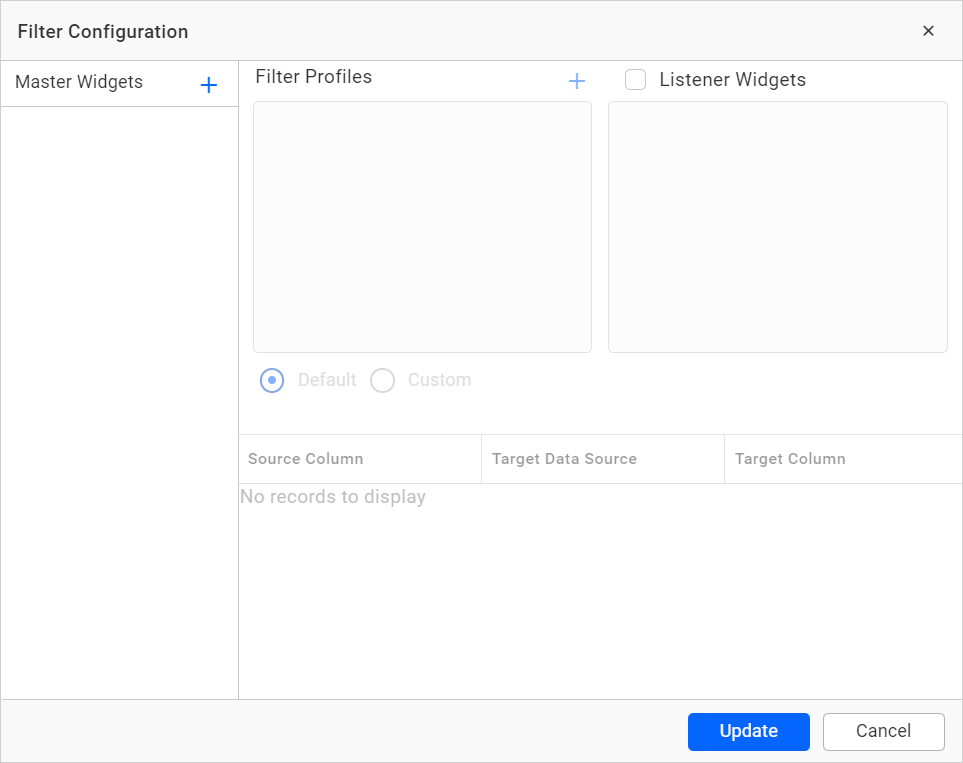
Master widgets
In the Filter Configuration window, the master widgets section contains the names of widgets whose Act as Master Widget property is enabled. Widgets added under this section will have a filter effect on user interaction. Any widgets not in the master widget section are designated as listeners in the listener widgets section.
You can explicitly add a widget to the master widgets section by clicking the highlighted icon.
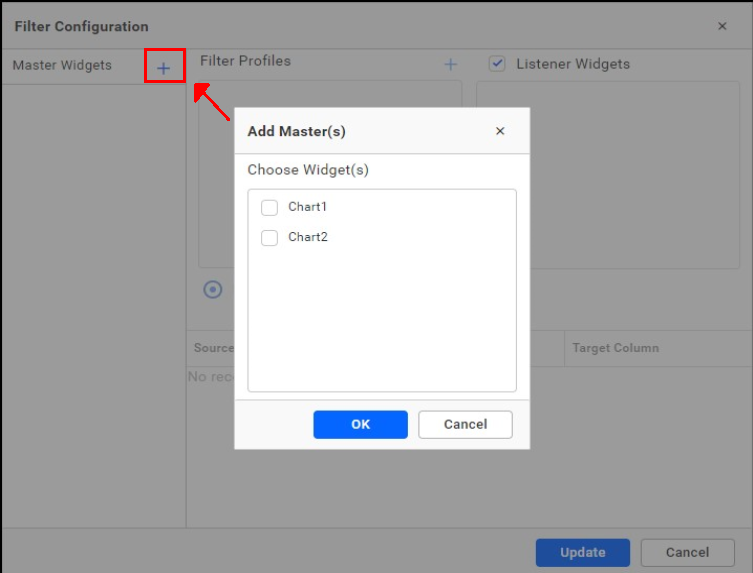
When selecting a widget, its associated filter profiles and listener widgets are displayed in their respective sections for customization.
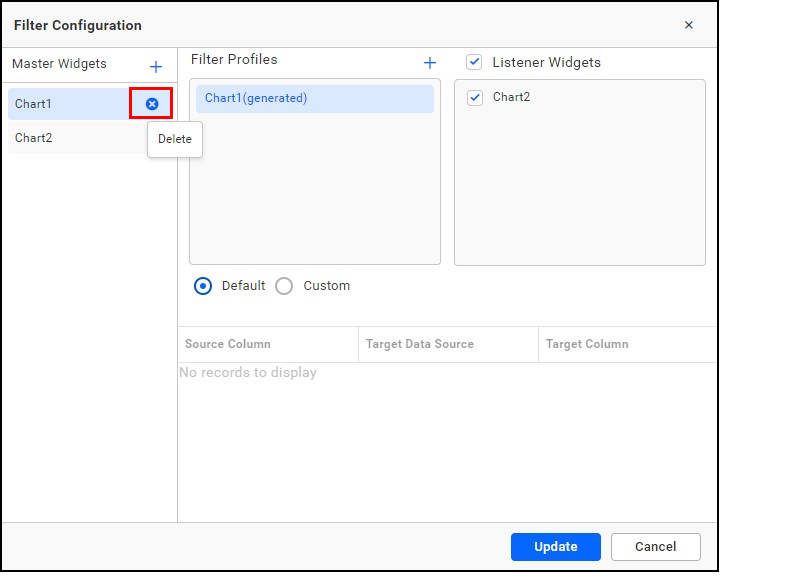
To remove a selected widget from the master widgets section, use the delete option in its header.
NOTE: Filter type widgets are automatically added for user convenience by default but can be removed if not needed. For the filter type widgets such as Combo Box and Date Picker with the dashboard parameter configuration, cross-filtering can be used.
Filter profiles
The filter profiles section contains a default profile that is automatically generated for the widget added in the master widgets section. This profile includes details about the filter criteria and listener widgets affected based on that criteria.
Filter criteria can be set through the bottom pane configuration.

This pane provides information about mapping a column in the current data source with the column in the target data source. By default, they are the same, and user interaction filtering is based on this. The default filter criteria can be customized by switching to the Custom option, where you can add, edit, and remove criteria.

To modify the default profile settings, remove it, or add a new profile, use the respective options in the header.
For additional insights, we can leverage two data sources, three grids, and two filter profiles. In one filter profile, we’ll apply one data source, while in the other filter profile, we’ll use another data source, as illustrated below. This configuration allows us to select the desired filters to refine our data within the Listener Widgets.

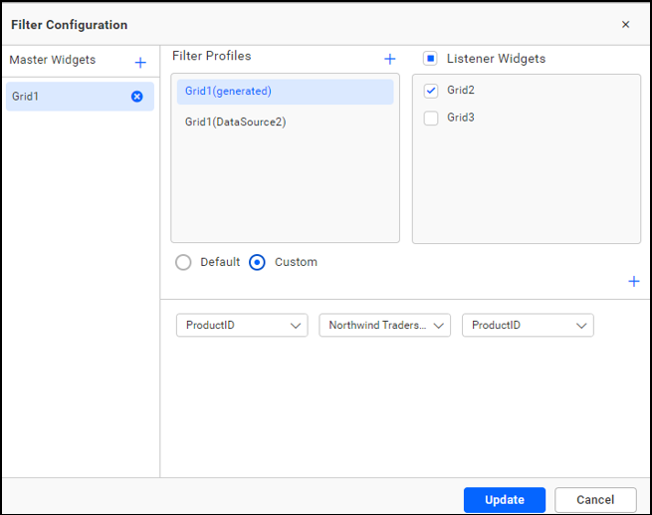
Through the use of the above two filter profiles, we can filter Grid2 using the productID from one data source, and Grid3 can be filtered using the productName from another data source, as depicted in the image below.
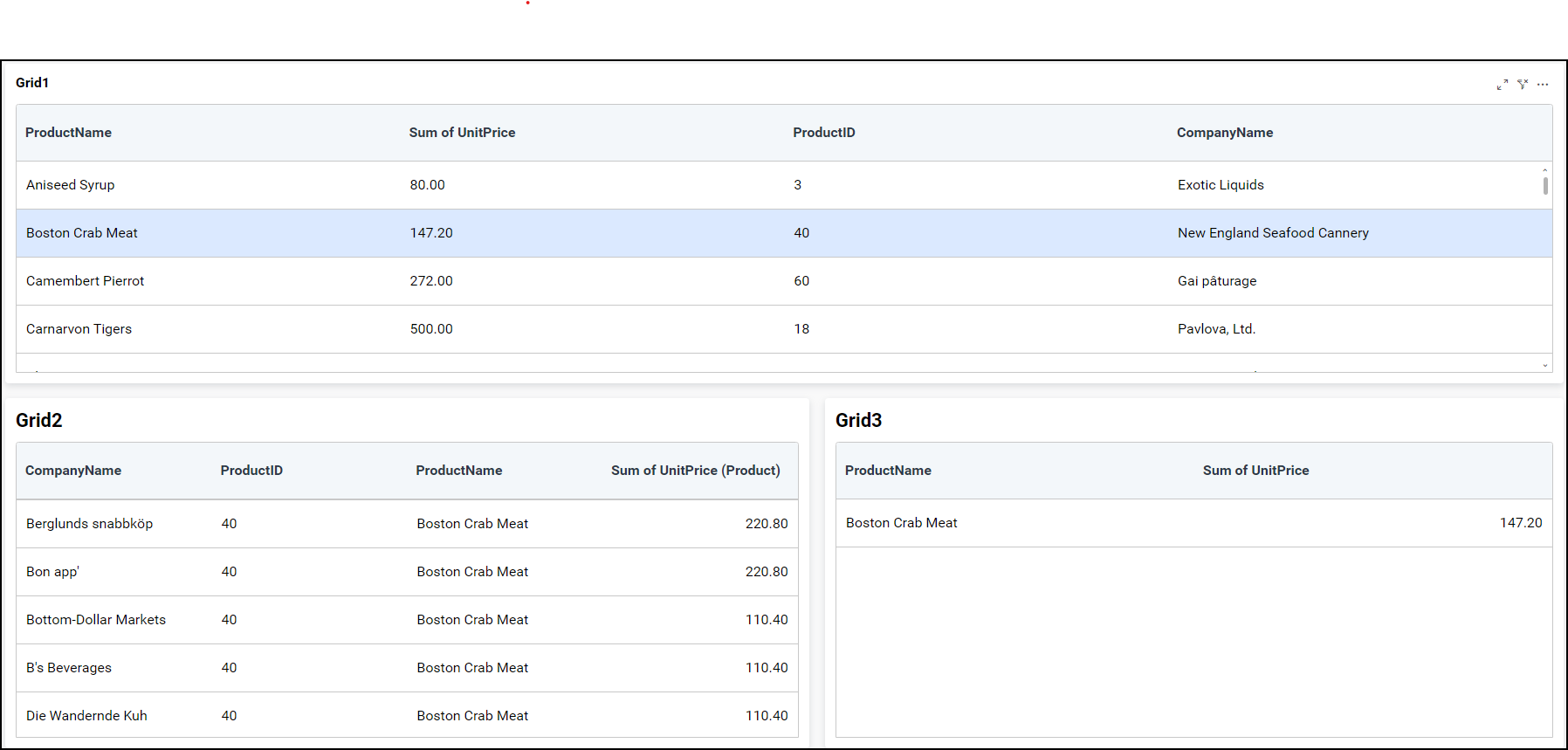
Profiles can be renamed by double-clicking them.
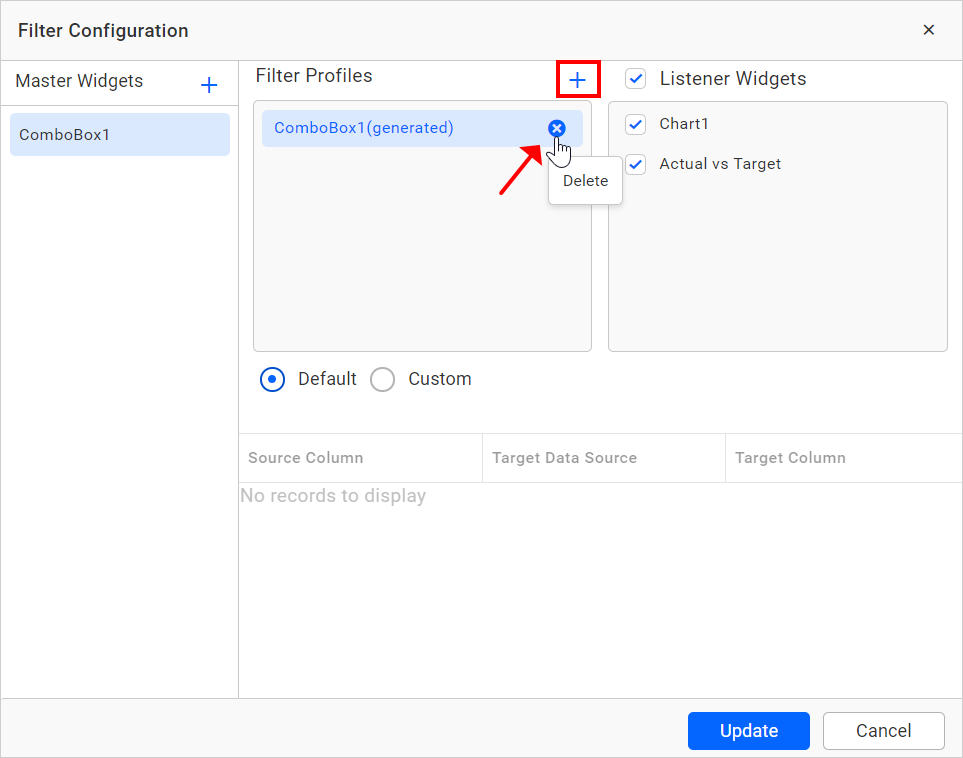
NOTE: If more than one filter profile is defined for a master widget, they will all have an interaction effect – all profiles that match the filter criteria will be applied.
Listener widgets
The Listener Widgets section contains a list of widget names other than the master widget. To map a widget to its corresponding master widget under a specified filter profile, select the checkbox next to the widget name. To disable a widget from responding to user interaction in the master widget, deselect the checkbox.
The Check All option next to the Listener Widgets label allows for customizing the selection of listener widgets by selecting or deselecting all widget names using this checkbox.
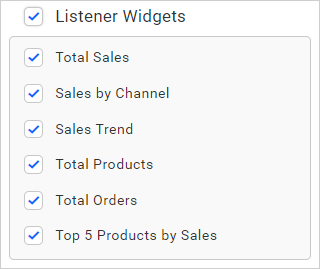
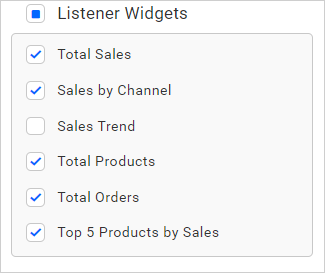
Cross Filters Example
Consider the following scenario:
The Engineer Performance widget is designated as the listener widget for the Team Leader Performance, Managers, and Project widgets. Similarly, the Team Leader Performance widget is designated as the listener widget for the Managers and Project widgets, while the Managers widget is designated as the listener widget for the Project widget.
In this example, the Engineer Performance widget demonstrates Cross Filtering.

Let’s examine how it functions:
When a filter is applied in the Projects widget, it filters the Managers, Team Leader Performance, and Engineer Performance widgets. The Managers widget displays information about selected managers for the chosen project, the Team Leader Performance widget exhibits completed tasks by team leaders under the chosen project, and the Engineer Performance widget displays completed tasks by engineers under the selected project.
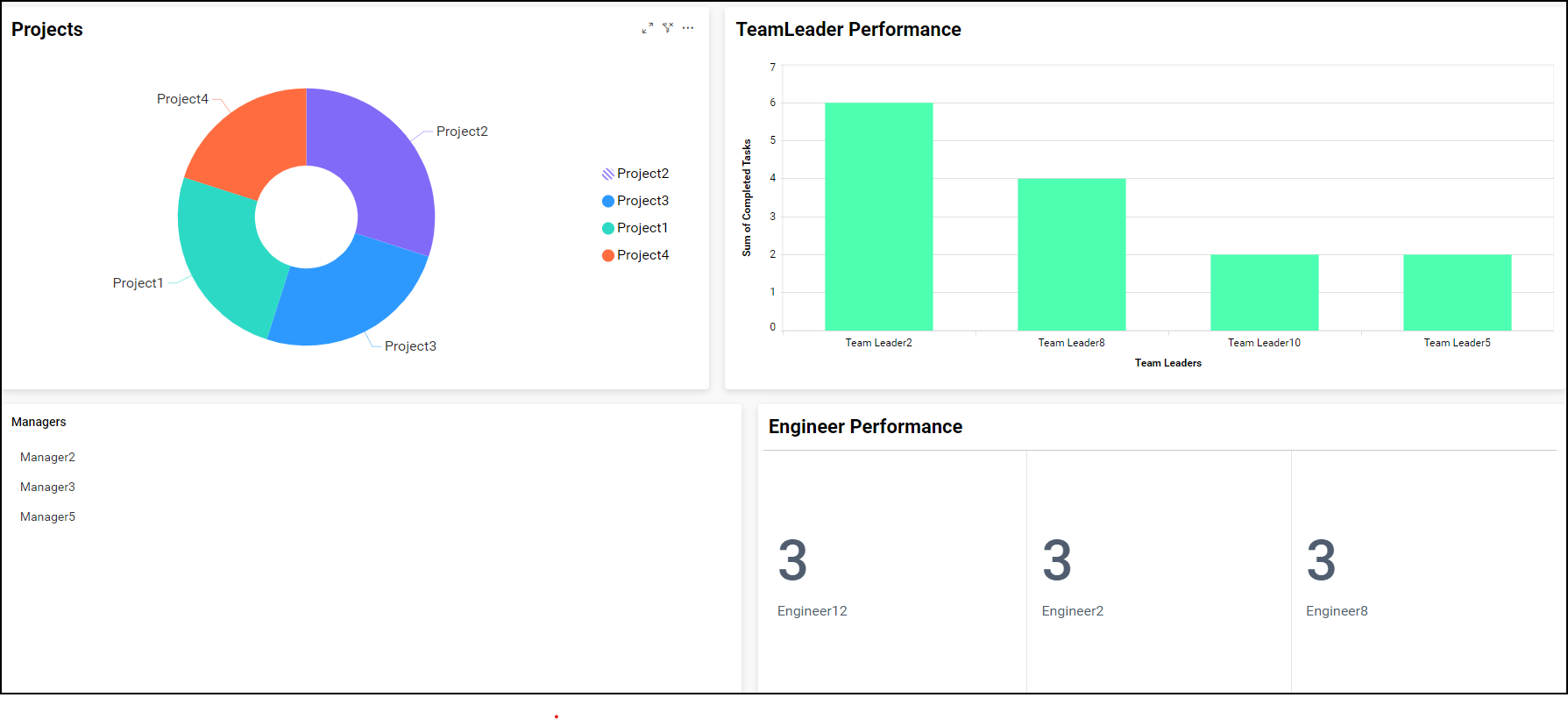
When a filter is applied in the Managers widget, it filters the Team Leader Performance and Engineer Performance widgets. The Team Leader Performance widget displays information about completed tasks by team leaders for selected managers, and the Engineer Performance widget exhibits completed tasks by engineers under the selected managers.
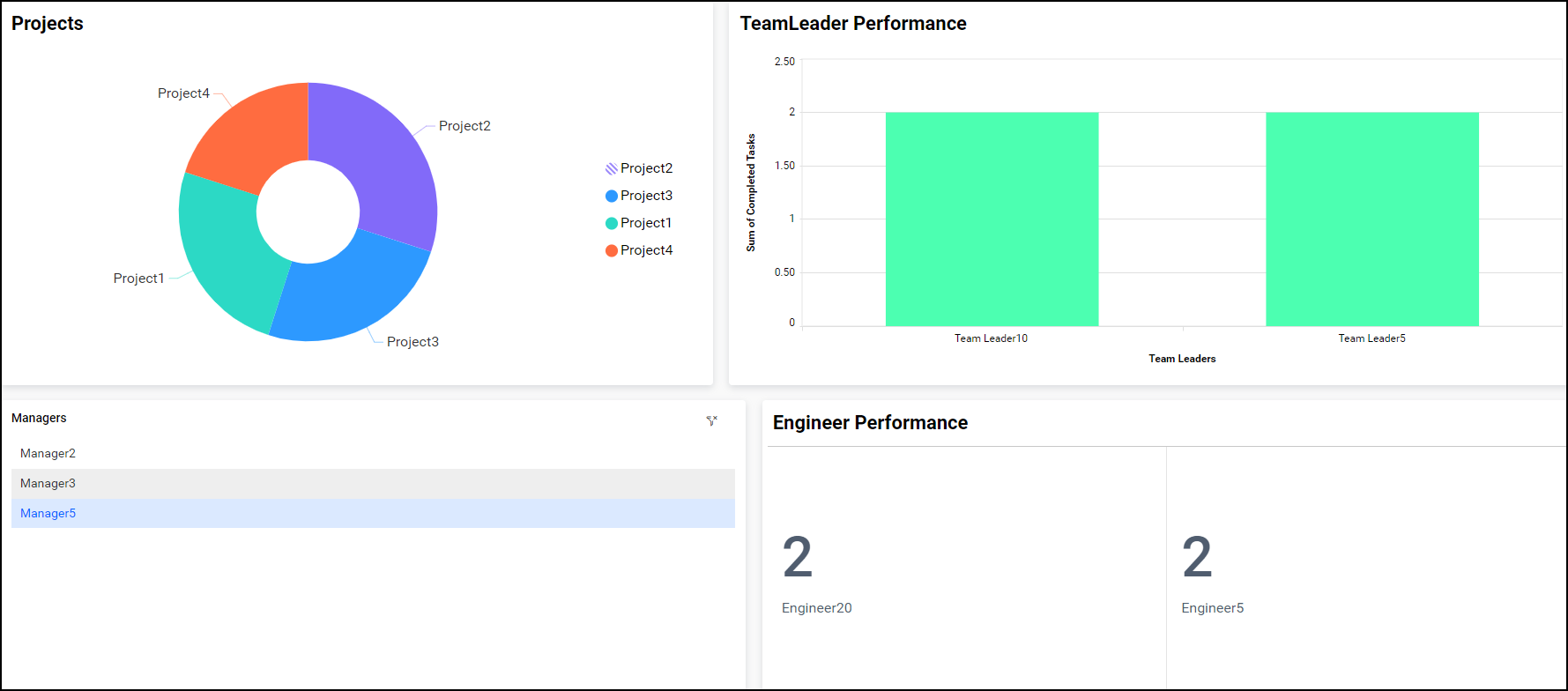
When a filter is applied in the Team Leader Performance widget, it filters the Engineer Performance widget. The Engineer Performance widget displays completed tasks by engineers under the selected Team Leader from the Team Leader Performance widget.

Filter Overview
Accessing the Filter Overview pop-up in Build provides insights into filtered widgets and their locations. Users can save cross-filter dashboards to their user account, either as default or non-default. Default saves ensure applied filters remain active upon reopening the dashboard, and also, all filters can be cleared by selecting CLEAR ALL in the Filter Overview interface.

Clicking View saved filters displays saved filters. Users can copy, share, or delete cross-filter dashboards and manage default settings. If not set as default, the dashboard renders with initially configured filters.
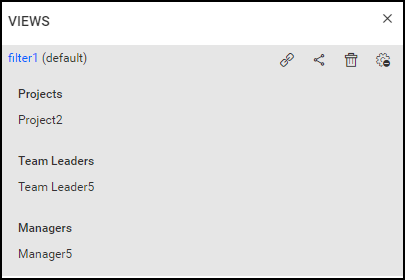
NOTE: We can remove the widget cross filter either by using the clear filter option in the widget or utilizing individual (cross marks) clear option in the Filter Overview.
